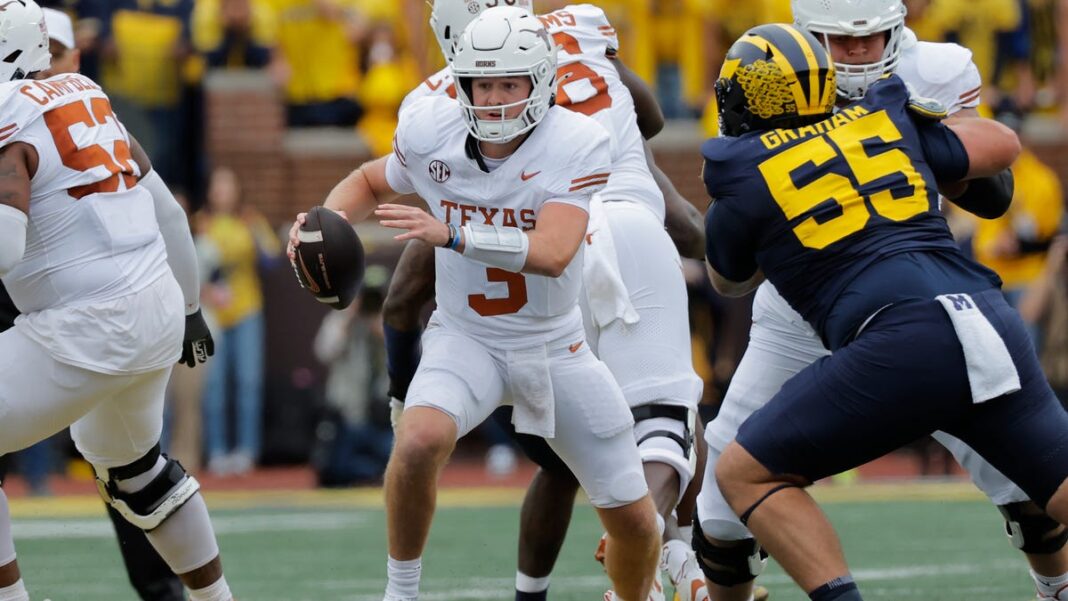SEC and Big Ten are exploring a major scheduling deal for college football
The SEC and Big Ten are in talks regarding a new scheduling agreement that could greatly enhance their media rights revenue, setting the two super conferences apart from the rest of college football, according to four individuals familiar with the discussions who spoke to YSL News.
Sources who wished to remain anonymous due to the sensitive nature of these talks indicate that the two conferences might arrange to compete in as many as 12 to 16 nonconference games each season, or potentially more, to gauge the increase in media rights income.
This potential scheduling collaboration aims to address billions in revenue lost from a legal settlement exceeding $2 billion involving former players, along with anticipated revenue sharing of $20 million to $23 million per year with players starting as early as the 2025 season.
An industry insider pointed out that to maximize revenue, there needs to be a greater number of high-profile games scheduled over a defined period, something that could be worked out in negotiations.
SEC and Big Ten joining forces for new revenue opportunities
This season, the SEC and Big Ten faced off in three nonconference games—Southern California vs. LSU, Alabama vs. Wisconsin, and Texas vs. Michigan—all ranking in the top 10 for viewership in the season’s initial month. However, three games per year are insufficient to significantly impact the lucrative agreements either conference holds with broadcasters like ABC/ESPN (SEC) and Fox, CBS, and NBC (Big Ten).
Promoting double-digit games as standalone events, similar to the annual Big Ten vs. ACC basketball challenge, that attract unique advertising revenue is enticing to TV networks.
However, various challenges remain to be addressed—such as the structure of the schedule, how games will be paired, and how revenue will be shared. Yet, officials from both conferences view this potential agreement as a necessary response to the swiftly evolving financial landscape in college football.
Private equity is another possible revenue path, although SEC Commissioner Greg Sankey and Big Ten Commissioner Tony Petitti stated last Thursday that this is not a viable option.
The leaders of college sports met in Nashville last week, along with athletic directors and various conference administrators, to highlight a movement that gained momentum following the SEC and Big Ten’s announcement in February to collaborate as an “advisory group” during a time of financial and operational turmoil in college athletics.
Estimating the potential revenue from a deal
The House settlement and the expected future revenue sharing with players signal a critical need for new—what one source termed “clean revenue.”
How much new revenue could be generated?
Enough to capitalize on an emerging revenue frontier, another industry expert indicated.
However, what may seem like a straightforward arrangement involves several unique considerations: How many conference games will the SEC and Big Ten hold (either eight or nine), and how many of the total 34 teams will be available for the proposed nonconference matchups?
Equally important is how the revenue will be allocated, and if the conferences decide to pool their non-conference matches, could there be future advantages in consolidating media rights revenue for greater financial stability?
Could the Big Ten and SEC someday join forces for a comprehensive rights deal across various networks rather than negotiating separate agreements for each conference?
An athletics director from the Big Ten remarked to YSL News Sports that everything is being considered.
Revising football schedules in the Big Ten and SEC
The entire process starts and concludes with scheduling. Presently, the Big Ten plays nine conference games while the SEC plays eight.
If the SEC were to transition to nine games, this could open the door to as many as 12 new nonconference matchups between the two leagues. If both conferences stick to eight games, there’s potential for 20 or more such encounters.
Four SEC schools (Florida, Georgia, South Carolina, Kentucky) have rivalries with in-state ACC teams they prefer to maintain, while Southern California (vs. Notre Dame), Oregon (vs. Oregon State), and Washington (vs. Washington State) also have protected rivalries.
These seven institutions want to avoid a future nine-game conference schedule that requires them to simultaneously schedule both a rival and an additional game from the new agreement, which would limit them to just one lucrative home game in the 12-game season.
Additionally, four of these schools (Florida, Georgia, USC, Oregon) are key television draws and vital for any nonconference game offers to media partners.
“We had extensive discussions about how to face each other more often,” Petitti stated after the meeting last Thursday. “We need to analyze which games to prioritize, the number of games, but that’s a broad discussion that we are having,”
All of this is happening in a landscape that clearly benefits the two super conferences, which have significantly distanced themselves financially from other FBS conferences, and would move even further away as a result of a nonconference scheduling agreement.
Nonetheless, the last thing the Big Ten and SEC want is to appear collaborative in a negative light. It’s noteworthy that both parties attended last week’s meetings with legal advisors to navigate potential pitfalls.
“Are we being deliberate enough with how we plan our schedules?” Sankey remarked during his visit to Ann Arbor last month when Texas faced off against Michigan. The experience left a strong impression on him. “It was an amazing moment. Standing on the sideline just before kickoff, I couldn’t help but wonder, ‘What if we could set up more of these kinds of matchups for our nonconference games?’”

